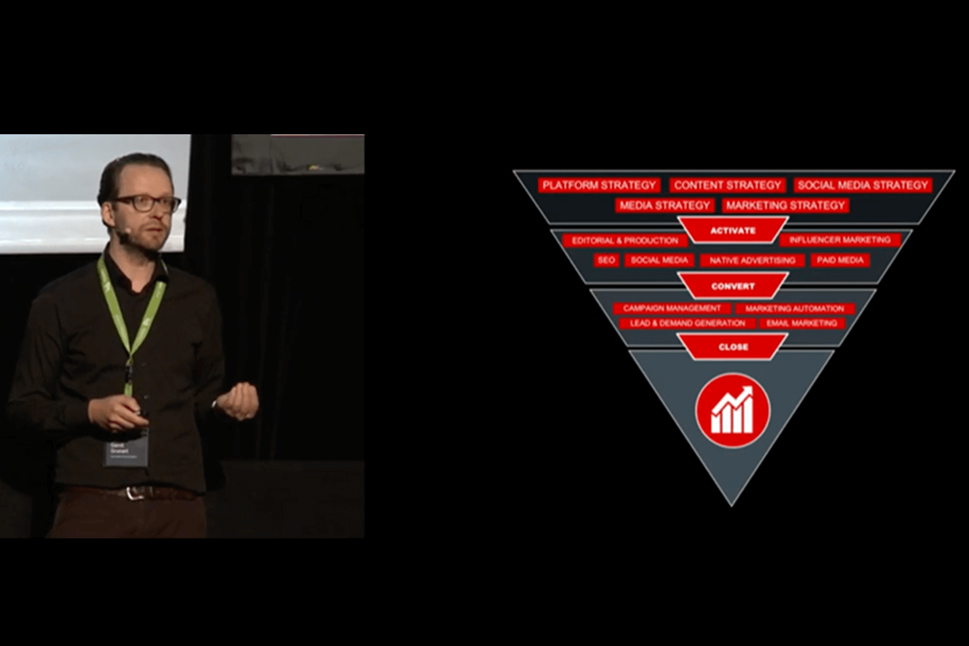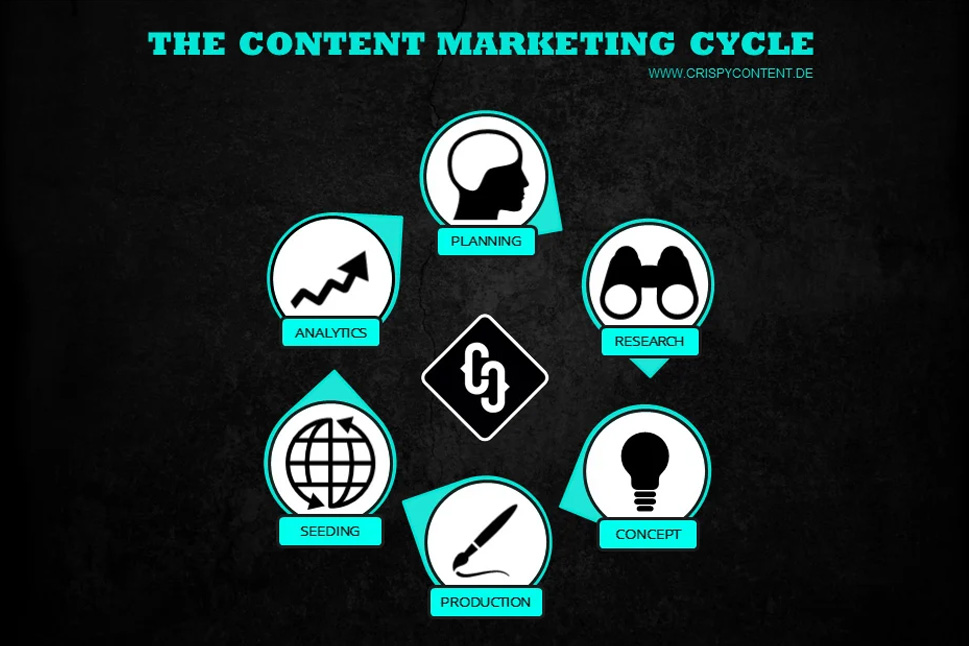Successfully Implement Content Strategies: Your Guide
Last updated on July 18, 2025 at 06:40 AM.Many companies invest heavily in developing sophisticated content strategies. Workshops, analyses, and audience profiles have long been standard. However, the reality of day-to-day operations often looks different: Strategic guidelines are not consistently translated into daily work. The result? Incomplete workflows, unplanned topics, and inconsistent communication. This gap between strategy and execution is a common phenomenon—especially in B2B companies and SMEs. There are many reasons for this. Often, there is simply not enough time to fine-tune processes. Responsibility for turning strategies into concrete actions is unclear. And in many cases, teams lack the methodological skills to derive tangible formats, channels, and KPIs from strategic frameworks. The transfer from strategy to practice remains fragmented—negatively affecting brand communication.

B2B Marketing: When Strategy and Daily Operations Drift Apart
In international marketing, this disconnect creates significant challenges. The strategy may be well-documented, but it’s nowhere to be seen in the editorial calendar. Content teams work reactively instead of proactively, and communication loses its focus. In times of budget cuts and increasing pressure to deliver results, this is something no company can afford.
The expectations are clear: Brand communication must be consolidated, content strategies must be operationalized, and a convincing cost-benefit ratio must be ensured. Strategies that are not embedded in daily operations fail to meet these requirements.
From Target Audiences to Editorial Planning: The Strategic Foundation
How can the gap between strategy and execution be closed? First, you need a solid strategic foundation. This includes clearly defined target audiences, a precise understanding of relevant topics, and a well-thought-out editorial structure. Knowing who you want to reach, how to reach them, and which topics are truly relevant creates the foundation for consistent communication.
Such a foundation makes it easier to select the right content formats, channels, and tactics. It helps teams stay on track during day-to-day operations. In industries with complex products and long decision cycles, this clarity pays off significantly.
Marketing Teams Need More Than Good Intentions
Experience shows that even with a solid foundation, execution remains demanding. Operational control means integrating strategy into every editorial meeting, every topic proposal, and every channel decision. This only works when responsibilities are clearly defined and processes are streamlined. Regular coordination, transparent decision-making, and a shared understanding of priorities are essential.
For international marketing teams, there’s an added layer of complexity: Local markets, cultural nuances, and varying audience needs require sensitivity and flexibility. Balancing global consistency with local relevance is a task that’s almost impossible without robust operational processes.
Digital Agencies: Driving Visible Impact Through Clear Metrics
Another critical success factor is performance measurement. Many strategies lose traction because their impact isn’t clearly measurable. If you can’t show how content efforts support business goals, you’ll quickly face pressure to justify budgets—especially when budget responsibility is involved.
Clearly defined KPIs provide a solution. These should go beyond reach and engagement to also cover strategic goals—such as the number of qualified leads, brand image development, or conversion rate increases. It’s crucial to review these KPIs regularly and adjust the content strategy as needed—based on data, with full transparency.
From Editorial Planning to Sustainable Communication
What does it look like in practice when companies successfully operationalize their strategies? Success stories show that companies that consistently align their actions with their strategy communicate more sustainably. They focus on recognizable themes, consistent messaging, and reliable processes. The result: Stronger brand positioning and more efficient use of resources.
In practice, this means editorial calendars are no longer dominated by ad hoc ideas or individual interests. Instead, every action serves a clear purpose derived from the strategy. This increases efficiency, improves team collaboration, and leads to measurable results.
Day-to-Day Challenges: Where Things Go Wrong—And How to Fix Them
The journey from strategy to execution isn’t automatic. Day-to-day business often presents hurdles: lack of time, resource constraints, misaligned priorities, and coordination difficulties. On top of that, external factors such as sudden budget cuts or market shifts can create further challenges.
However, these issues can be systematically addressed. By establishing clear roles and processes, using the right tools consistently, and regularly training teams, many operational bottlenecks can be resolved. Documenting best practices and lessons learned also helps stabilize execution and continuously improve it.
Industry-Specific Approaches: How to Tailor Your Strategy to Your Business
Each industry has its own rules and requirements. While technical detail and expert knowledge are crucial in mechanical engineering, other topics take priority in the services sector. The key is to operationalize your strategy in a way that suits your specific industry and target audience.
Innovative approaches can help here—for example, modular content formats that adapt flexibly to different channels and markets. Data-driven content planning that detects trends early and integrates them into communication is another option. Additionally, collaborating with external partners who bring both strategic and operational expertise can make a decisive difference.
First Steps Toward Successfully Operationalizing Your Strategy
So, what can companies do to successfully embed their content strategy into everyday operations? The first step is a critical analysis of the current situation: Where are the gaps between strategy and execution? Which processes are already working well, and where is there room for improvement?
Based on this analysis, a clear action plan should be developed. This includes defining roles and responsibilities, selecting appropriate tools, and regularly reviewing key KPIs. Systematic documentation and sharing of success stories within the team also help foster sustainable execution.
Agencies as Sparring Partners for Your Success
Successful content strategies don’t emerge in an ivory tower. They require operational excellence, methodological expertise, and a deep understanding of industry-specific challenges. By partnering with experienced agencies, companies can benefit from proven methods, innovative approaches, and a clear focus on what’s feasible.
An agency that combines creativity with analytical expertise and industry knowledge can help close the gap between strategy and execution. They make methods transparent, explain mechanisms in an easy-to-understand way, and identify trends early—so decision-makers can act confidently and achieve their communication goals.
A Strategy Guide for Consistent Communication
Strategy only becomes effective when it’s reflected in formats, channels, and KPIs. Companies that consistently operationalize their content strategies lay the foundation for consistent and sustainable brand communication. You’ll find a practical guide in our latest ebook.
Creative, smart and talkative. Analytical, tech-savvy and hands-on. These are the ingredients for a content marketer at Crispy Content® - whether he or she is a content strategist, content creator, SEO expert, performance marketer or topic expert. Our content marketers are "T-Shaped Marketers". They have a broad range of knowledge paired with in-depth knowledge and skills in a single area.




.png)











.jpg)

-1.jpg)

-1.jpg)
.jpg)



.jpg)













.jpg)







.jpg)

































.jpg)












































